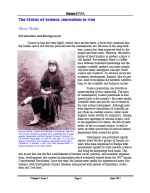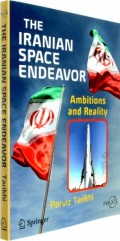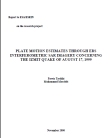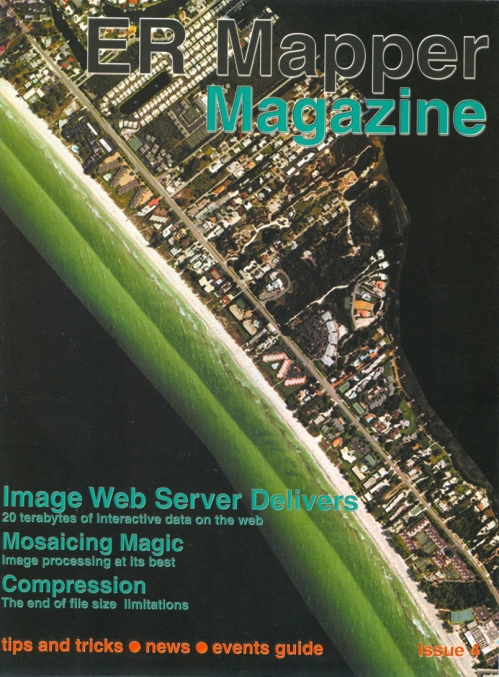ISA’S DATA SHARING AND GROUND RECEIVING STATION DEVELOPMENTS
Parviz Tarikhi
Microwave Remote Sensing Research Core
Mahdasht Satellite Receiving Station, ISA
parviz_tarikhi@hotmail.com
[Presented to the Expert Meeting for Development of Data Sharing Platform and Technical Experience-sharing for Cost-effective Operation and Maintenance of National Satellite Earth Stations that was jointly organized by the Islamic Network on Space Sciences and Technology (ISNET), OIC Standing Committee for Scientific and Technological Cooperation (COMSTECH) and Islamic Educational, Scientific and Cultural Organization (ISESCO) and held on 12–15 July 2011 in Islamabad, Pakistan.]
ABSTRACT
Remote Sensing is one of the basic topics in the context of the Iranian Space endeavor. This technology is considered as one of the earliest applications of space technology that was developed inIranalong with the space communications and broadcasting activities.Iranestablished its ground receiving station at the Mahdasht site nearTehransoon after the launch of the earliest commercial remote sensing satellite, Landsat of USA. The site became one of the few top sites around the globe to receive earth observation data that ever has been felt to be necessary for country’s development and research programs on monitoring, informed management and planning, and control of its immense and extended natural sources/resources. The Mahdasht site in its fluctuated life span has played a considerable role in supplying mainly national data users’ community both in state and private sectors with the needed earth-space data. The site is in the process of developing its data receiving plans and activities for receiving from domestic satellites as well as those which belong to other countries or international organizations.Iranalso develops other ground receiving stations throughout the country to cover the need for earth-space data of the users’ community as much as possible. Beside the activity for developing its ground receiving stationsIranactively involved with data sharing/providing plans in domestic and international level. This paper tries to give an appropriate detail on the subject activities ofIranand its relevant contribution in this connection, and discusses the status and procedures that have been made/is being made in this field.
INTRODUCTION
Iranentered the space applications era in 1969 by establishing the Asad-Abad Ground Station and installing a 30m-diameter standard-A antenna to connect to the Pacific Intelsat for international communications. With the assistance of theUSAthe Mahdasht Satellite Receiving Station was established in 1972 following the launch of the American Earth Resource Technology Satellite (ERTS-1) -which later named Landsat-1. The station was among the only five stations around the globe receiving Landsat data at that date. Establishment of the station wasIran’s first bilateral cooperation in space technology. Telecommunications, TV broadcasting, remote sensing, navigation, tele-education, weather forecasting, environmental modelling, internet, relief and rescue, etc. are common applications of space technology that have spread widely in Iran. The history ofIran’s space efforts and its drive to pursue independent space projects began many years ago before the advent of the Islamic revolution inIranin 1979.
In 1977 the first official step to establish a space agency was taken. However, the Islamic revolution inIranin 1979 and the eight-year war withIraqstarting in 1980 halted all efforts in the process of institutionalizing space activities inIran. Only the continuation of some space applications, such as communications and remote sensing, was allowed. Space technology applications were spread inIranby various organizations, indicating the country’s serious interest in further understanding and benefiting from space. Soon after the launch of theUSA’s first earth observation system,Landsat,Iranbuilt the Mahdasht Satellite Receiving Station facility 65 km west ofTehranto obtain remote sensing imagery. The Iranian Remote Sensing Center (IRSC) was established, with responsibility for collecting, processing and distributing relevant imagery products to users throughout the country that ever has been felt to be necessary for country’s development and research programs on monitoring, informed management and planning, and control of its immense and extended natural sources/resources. Availability of remote sensing data assisted, for instance, in identifying areas suitable for development and those prone to earthquakes, floods, landslides and other natural disasters and threats; in investigating greenhouse gas emission and air pollution in the large urban areas; in monitoring wetlands and water basins inland and those shared with neighboring countries; and in other useful activities for global benefits. For telecommunications and broadcasting, as well as other applications, the Ministry of Post, Telegraph and Telephone (MPTT), the Iranian Broadcasting Organization and the Ministry of Science were involved.
Satellite remote sensing data has been recognized as an efficient and modern tool for studying and monitoring the environment and resources ofIranand been used since such data was made available commercially. Space remote sensing is one of the basic topics in the context of the Iranian space endeavor. This technology is considered as one of the earliest applications of space technology that was developed inIranalong with the space communications and broadcasting activities. The Mahdasht site in its fluctuated life span has played a considerable role in supplying mainly national data users’ community both in state and private sectors with the needed earth-space data. The site is in the process of developing its data receiving plans and activities for receiving from domestic satellites as well as those which belong to other countries or international organizations.Iranalso develops other ground receiving stations throughout the country to cover the need for earth-space data of the users’ community as much as possible. Beside the activity for developing its ground receiving stationsIranactively involved with data sharing/providing plans in domestic and international level.
GROUND RECEIVING STATIONS DEVELOPMENT
Mahdasht Satellite Receiving Station
Mahdasht Satellite Receiving Station that is currently affiliated with the Iranian Space Agency (ISA) and officially included in theAlborzSpaceCenteris located approximately 65 kilometers west ofTehran. Established in 1972 the activities and development of the station could be chronicled as below, while it should not be ignored that in each period the driving attitudes and visions of the authorities have practically influenced its progress and development.
Period of 1972-1978: Launch of the United States Earth Resource Technology Satellite (ERTS-1) -which later became Landsat-1- in 1972 actually raised the attention and real interest in remote sensing technology inIran and is considered as the starting point for such the space related activities inIran. Soon after, an office for data collection in the Budget and Planning Organization of the date established. Because of rapid developments and progress in the space technologies and remote sensing in particular,Iran was enthusiastically stepping forward in harmony with the global advancements in this connection. Consequently, benefiting the supports from the United States of America (USA)Iran decided to proceed for direct acquisition of satellite data. After compilation ofIran’s request by theUSA it was agreed thatIran supply data to the 33 countries under coverage ofIran’s receiving antenna to be installed. In 1974 a contract was signed betweenIran and General Electric Company ofUSA for installation and conducting a satellite data receiving station.
At the same time, under the Plan for Satellite Data Applications the remote sensing activities officially continued in the National Radio and Television Organization of Iran of the date. Through a feasibility study for site selection, the current site of the Mahdasht Satellite Receiving Station at Mahdasht (formerly named Mard-Abad) ofKarajwas distinguished suitable for establishing the station for direct satellite data receiving. The installation process began in 1976 and two phases including tracking and data acquisition completed and operationalized by 1978 while, 3 full coverage of Landsat satellite data ofIranwas acquired and archived by the station.


Figure 1: Aerial views of the Mahdasht Satellite Receiving Station (image source: ISA)
According to signed contract between Iran and the US General Electric Company, and based on the global common procedures for satellite data acquisition in USA, Canada and some other countries five phases were planned for set-up in Mahdasht Satellite Receiving Station as follows:
- First Phase, including installation and operationalizing the facilities for tracking the Earth resource satellites and direct data acquisition from those satellites
- Second Phase, including installation and operationalizing the facilities for recording and data correction
- Third Phase, including installation and operationalizing the facilities for analysis and data processing
- Fourth Phase, including installation and operationalizing the facilities for data management
- Fifth Phase, including installation and operationalizing the facilities for data printing, proliferation and production
The advent of the Islamic Revolution inIranin 1978 urged rapid quit of theUScontractor and suspension of the project implementation following which the management and coordination of the plan was put onIran.
Period of 1978-1991: Change in the visions and emerging new managerial attitudes because of the Islamic revolution inIran put the plans for development of the Mahdasht Satellite Receiving Station and continuation of its activities in a long-lasting ambiguity. The experts, engineers and even the mid-rank managers of the station began the efforts for saving it and justifying the top authorities and decision-makers of the importance and necessity for continuation of the work of such the station and the role that remote sensing and other space technologies can play in informed management and control of the resources and available potentials for development of the country. Management of the Mahdasht Satellite Receiving Station was shifted from the National Radio and Television Organization to the Budget and Planning Organization again. The main and considerable success for the Mahdasht Satellite Receiving Station in this period that was realized in light of the efforts and work of the experts and engineers of the station is as follows:
- Operationalizing and conducting the installed facilities for direct data acquisition from meteorological NOAA satellites series
- Training the experts and technologists of the user organizations and institutes throughout the country for transferring the technology of satellite applications
- Installation and operationalizing the second, third, fourth and fifth phases of the station for data production and proliferation
Production and availability of the full coverage of satellite data ofIranacquired and archived by the station provided the possibility for access to the satellite data ofIranfor implementing different projects and plans around the country and holding workshops for transferring the knowledge and expertise of satellite data applications.
Period of 1991-1996: In line with the efforts made by the experts for development of remote sensing technologies throughout the country in the previous period, some commitments officially made for changing the existing situation and transition from the Plan for Satellite Data Applications and further institutionalizing of the remote sensing activities. In 1991 the Parliament of the Islamic Republic of Iran passed the law for transferring from the Plan for Satellite Data Applications to the state-run firm of the Iranian Remote Sensing Center (IRSC). According to the approval IRSC became affiliated to the Ministry of Post, Telegraph and Telephone (MPTT) of the date. The latter changed to the Ministry of Communications and Information Technology according to the approval of the Iranian Parliament on 10 December 2003.
Period of 1996-2002: Approval of the law for changing the Plan for Satellite Data Applications to the state-run firm of IRSC caused some legal problems for IRSC in terms of securing its financial sources and inability for developing its plans and programs. The authorities decided to downsize IRSC and confined the activities of the Mahdasht Satellite Receiving Station that finally led to suspension of the activity of the station temporarily. However, before the suspension, the activities of the fifth and first phases including data production and proliferation, and direct data acquisition from meteorological satellites continued in its lowest level.

Figure 2: The view of the antennas installed at the Mahdasht Satellite Receiving Station (image source: ISA)
Period of 2002-date: Administrational and organizational changes in MPTT and its transition to the Ministry of Communications and Information Technology followed by the establishment of the Iranian Space Agency (ISA) in February 2004. ISA covered officially, according to its establishment law, all the remote sensing activities throughout the country. Consequently the activation of the Mahdasht Satellite Receiving Station and its revival was highly considered by the authorities. Reconstruction and operationalizing of the Mahdasht Satellite Receiving Station practically began in 2003. In continuation all the active receiving facilities of ISA in Saadat Abad headquarters in north ofTehran translocated gradually to the Mahdasht Satellite Receiving Station. New specialists as well as staff have been employed. Although the antenna for receiving from Landsat has been abandoned, other facilities for receiving new generation satellites data in both S- and X-band frequencies that are used by existing and future satellites including NASA’s TERRA-MODIS [Moderate Resolution Imaging Spectro-radiometer] (since October 2001), Russian OKEAN satellite, Indian IRS [Indian Remote Sensing] (In September 2002, the station was made capable of receiving data from IRS satellite; it was active for only few years), NOAA-AVHRR [Advanced Very High Resolution Radiometer] (The center has obtained/ stored more than ten years from NOAA) and Chinese FY-2 meteorological satellites continues and the plans for receiving from other satellites is in the way. This all is in line with the plans for concentrating the remote sensing activities of ISA in Mahdasht Station and developing it to become theAlborzSpaceCenter. The site will comprise of the most comprehensive and multi-task ground space complexes, laboratories as well as work, living and leisure facilities for theIran’s space science and technology specialists, scientists and officials.
Development of other ground receiving stations
Iranhas been continuously developing its ground segments and facilities for communications and data acquisition throughout the country for many years. Boomhen, Asad-Abad andIsfahanare the ground stations established mainly for communication purposes, while the Mahdasht Satellite Receiving Station is being developed to become theAlborzSpaceCenter. The site will comprise the most comprehensive and multi-task ground space complexes as well as working, living and leisure facilities forIran’s space science and technology specialists, scientists and officials. ISA’s remote sensing activities are presently conducted by its ‘‘Remote Sensing Administration’’, which is largely situated in theAlborzSpaceCenter. There is only one office for remote sensing located in ISA headquarters inTehran. The official tasks of the former IRSC are presently allotted by the Remote Sensing Administration of ISA. There are also other ground stations established for receiving remote sensing data managed and controlled by the private sector, universities and non-civilian sector. ISA is in the process of developing the ground facilities in a few new sites inTabriz(EastAzerbaijanProvince),Isfahan(IsfahanProvince),Shiraz(FarsProvince), Mashad (Khorasan-eRazaviProvince) and Chabahar (Sistan andBaluchistanProvince).
DATA SHARING DEVELOPMENT
In addition to the activities and plans for direct satellite data receiving which is subsequently archived for the future use, the Iranian Space Agency actively develops its plans for providing, supplying and archiving data retrieved through the third party bodies including the inland and international firms and organizations which provide non-real-time data for enjoying the needs of the country’s user community. ISA archiving system is searchable through the web site of the agency that provides quick-looks making the potential and interested users capable of finding and locating the available archived data in the data archive of the Iranian Space Agency based inAlborzSpaceCenter. The users then may order their needed data through the users’ data supplying office of the Iranian Space Agency. The archive is planned to be developed and extended to be included in a comprehensive data center to comply the increasing needs of the community of data users domestically and internationally.
ISA also contributes to the data sharing initiatives in national, regional and international levels. The activity in this connection includes the involvement in the initiatives such as UN-SPIDER in the international level, UN-ESCAP RESAP in the regional level mainly focusing on the disaster mitigation and management plans. ISA has developed the regional office for UN-SPIDER which is capable of providing data services to inland and the neighboring countries in case of the advent of disasters. Moreover, there have been official efforts and commitments to establish a center for informed space and communication-based disaster management inIranunder the ESCAP’s Regional Space Application (RESAP) initiative.
REFERENCES
[1] Tarikhi, Parviz: Mahdasht Satellite Receiving Station Verging into a Space Center, Tehran, Iran, 13 October 2008, http://rescommunis.wordpress.com/2008/10/13/guest-blogger-parviz-tarikhi-mahdasht-satellite-receiving-station-verging-into-a-space-center/ (accessed 20 June 2011)
[2] Harvey, Brian; Smid, Henk; Pirard, Theo: Emerging Space Powers; the New Space Programs of Asia, the Middle East, and South America, Springer/Praxis, February 2010, pp. 255-264
[3] Tarikhi, Parviz: Iran’s space program; Riding high for peace and pride, Space Policy International Journal (Elsevier), Issue 3, Volume 25, August 2009, pp. 160-173 (DOI: 10.1016/j.spacepol.2009.05.010).
[4] ISA’s web site (Persian Version): The Milestones of the Mahdasht Satellite Receiving Station, http://www.isa.ir/pagecontent.php?rQV===AfAlTM4MzNApjclJWb15GZJV2ZhBHfABDQ6UGc5RFduVGdu92Y8BEMApTZwlHVlJXd0NWdyR3c8BEMApTZwlHVkxWamxHQ2IDQ6UGb0lGd (accessed 20 June 2011)
Parviz Tarikhi (https://parviztarikhi.wordpress.com) is a space science and technology specialist in Iran majoring in radar remote sensing since 1994. He holds a PhD degree in physics focusing on microwave remote sensing. He heads the Microwave Remote Sensing Research Core at the Mahdasht Satellite Receiving Station. He has been involved with the United Nations Committee on the Peaceful Uses of Outer Space (UN-COPUOS) since 2000, including as Second Vice-Chair and Rapporteur in 2004-06 of the committee bureau. Since 2001 he has co-chaired Action Team number 1 of UNISPACE-III with the mission ‘to develop a comprehensive worldwide environmental monitoring strategy’. From 2004-07 he led the Office for Specialized International Cooperation of the Iranian Space Agency. He is also a freelance journalist and technical writer. He has made in the mean time years of research and study on the developments and status of space science and technology with a particular focus on Iran.
Note: Apart from any fair dealing for the purposes of research or private study, or criticism or review, this publication may only be reproduced, stored or transmitted in any form or by any means with the prior permission in writing of the author.
———————————————————————-
Dear visitor,
Thanks for visiting this page!
I would appreciate your comments and suggestions on the content and set-up.
Parviz Tarikhi


































































May 29, 2012 at 04:02
If you’re serious about getting tons of free targeted traffic to your site, watch this 1 minute video for free at http://doneforyoutrafficz.com
December 26, 2011 at 23:03
Cool theme. Where did you get it.
December 25, 2011 at 22:14
howdy beneficial web page i am going to definaely revisit to check out once more.
December 24, 2011 at 22:50
Trackback Priority…
I simply could not go away your web site before suggesting that I really enjoyed the usual info a person supply in your visitors? Is going to be back ceaselessly in order to check out new posts….
December 23, 2011 at 11:13
Much Thanks!…
Thanks for taking the time to provide us all with the info!…
December 22, 2011 at 19:48
great site
December 22, 2011 at 09:22
Much Thanks!…
Thanks for taking the time to provide us all with the info!…
December 12, 2011 at 19:49
Its hard to find good help…
I am constantnly proclaiming that its hard to find quality help, but here is…
December 9, 2011 at 18:06
I really like your site…
I loved studying your content. It is definitely a great study for me. I’ve bookmarked it and I am looking ahead to perusing new articles. Sustain the great do the job!…
December 7, 2011 at 13:06
Wow this site rocks…
Many thanks for scripting this thorough post, it absolutely was so helpful for me!…
December 3, 2011 at 23:48
Digg…
While checking out DIGG yesterday I found this…
December 2, 2011 at 13:38
Not exactly trending…
Not as news worthy as Norway, but splendid anyway….
November 12, 2011 at 15:05
I have already been searching on the internet over 3 a long time today, nonetheless We by no means discovered any kind of fascinating article like your own. It is fairly worth adequate for me personally. In my opinion, when just about all website masters as well as bloggers created great content material when you did, the web is going to be considerably a lot more helpful than previously ahead of.
December 1, 2011 at 01:21
Thanks a lot!
November 10, 2011 at 16:50
Fantastic Submit.thanks for reveal..more wait around .. ?-